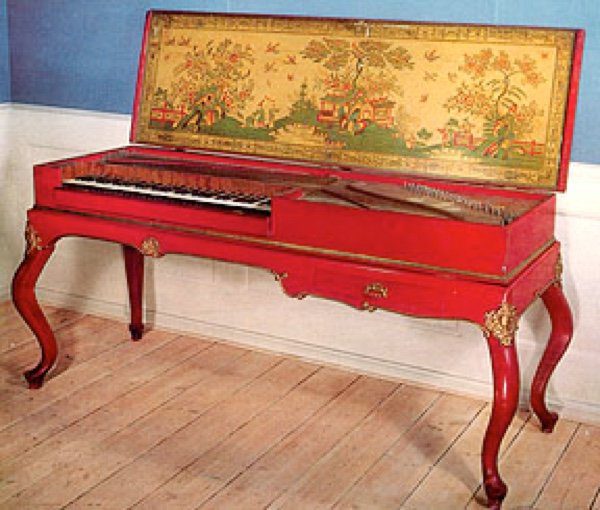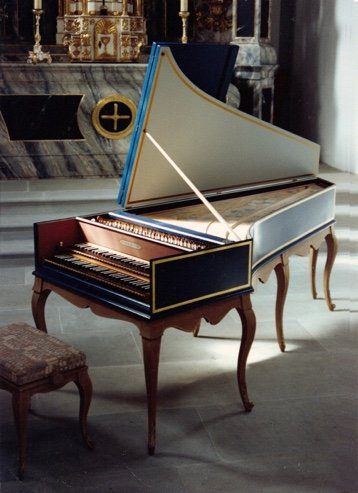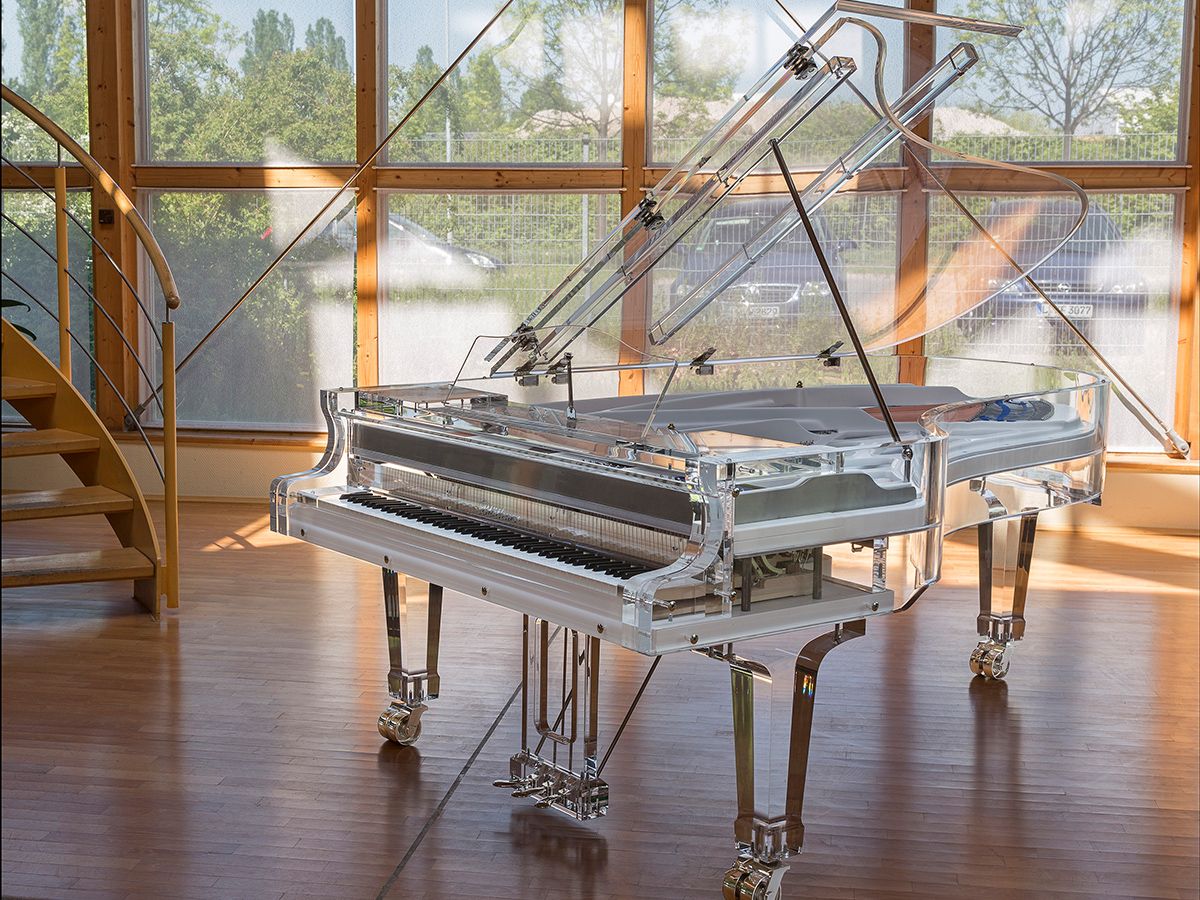Who Invented the Piano?
Sure, I can give you a name, (and he wasn’t Egyptian) but you can’t truly report on the inventor of the piano without looking back through the entire history of man for the nuanced answer. Never was there a better case of the results of a person’s accomplishments coming from standing on the shoulders of his myriad predecessors.
Sumer, one of the earliest known civilizations, sits in a region that is now known as southern Iraq (once called Mesopotamia). Its emergence was followed by the cultures of Ancient Egypt and Indus Valley (which is now Pakistan), and many others. While there is speculation about who came first, and what constitutes the true “cradle of civilization,” it is known that musical instruments date back to the beginning of what is known as BCE (Before the Common Era) or Before Christ (BC). Both abbreviations have approved usage today.
In Sumerian writings, it’s recorded that they used the monochord which, according to scholars, was a musical instrument that included, in variations, a tuning peg, a nut, a string, a moveable bridge, a fixed bridge, calibration marks, a resonating belly box, and an end pin. Some have accredited Pythagorus (6th Century BCE) with its invention.
A small aside: Recent studies are showing that Aborginals in Australia may predate the known cradles of civilization. And they too created various musical instruments 80,000 years ago including the didjeridu which is still in use today.
The monochord is a sound box with a single string stretched over a movable bridge to the position required, based on a scale marked on the surface. The bridge is moved to each marking to make a new note as it was plucked. The one-string monochord appeared in different variations of this, not unlike the design of a bow of a violin.

Since the invention of the monochord and its moveable bridge, instruments popped up all over the world. These include the gugin, (a 7-string Chinese zither), dan bau, (an ancient 1-stringed monochord in Vietnam), koto, (13-string national instrument of Japan), veena, (an ancient Indian stringed lute), organistrum (an 11th Century hurdy gurdy) and clavichord. The clavichord is widely considered the mother of all keyboard instruments.

When did the clavichord appear?
The clavichord is a European stringed keyboard instrument popularized in the late Medieval through the Renaissance, Baroque and Classical eras. It was invented in the fourteenth century, producing sound by striking strings (iron or brass) with small tangents (metal blades.) Vibrations are transmitted through the bridge(s) to the soundboard.
The action of the clavichord is unique among all keyboard instruments in that one part of the action initiates the sound vibration and simultaneously defines the endpoint of the vibrating string, and therefore its pitch. Because of this direct relationship between the player’s hand and the production of sound, the clavichord is known as the most intimate of keyboard instruments. At the same time, it has serious drawbacks. For one, it has an extremely low volume, making it unsuitable for large venues but perfectly satisfactory for the venues of the time – usually private residences. Nonetheless the clavichord remains well loved because the player is able to control the duration, volume, and even subtly affect tone and a vibrato unique to the clavichord, which makes it an extraordinarily expressive musical instrument.

When did the harpsichord appear?
The earliest known harpsichord references are in 1397 in Italy and 1425 in Germany.
The harpsichord was likely developed out of the knowledge gleaned from the pipe organ (a wind pipe instrument) and the psaltery of ancient Greece (a small hand-held plucked harp) as well as the advances in clockwork and other machinery being made at the time

Instead of striking the string with a tangent, (like the clavichord), the harpsichord uses a separate bird quill or a piece of hard leather to pluck each string (plectrum singular, plectra plural). Also, the harpsichord’s strings run parallel to the keys, like a grand piano, whereas a clavichord has strings perpendicular to the keys, like a modern upright piano. When a harpsichord is played, the key lifts a jack, which pushes the plectrum against the string, causing the string to be plucked. Like the clavichord, the harpsichord contains a damper to cut off the vibration as soon as the key is released.
The Italians’ harpsichords were of light construction and little string tension, unremarkable until later in the era when they became more elaborate and significant in the hands of Cristofori. Meanwhile, circa 1600, the Flemish harpsichord makers were creating substantial instruments well into the 18th Century. The French built on the Flemish creations by adding a second keyboard, creating an expressive double. They reached their apex in the 18th Century, always in competition with the Flemish. England too got into the act of building harpsichords and did themselves proud as builders of fine instruments enveloped in grand cases with beautiful veneers and marquetry. The Germans roughly followed the French makers and the simplicity of the early Italian models. There were star harpsichord makers in each of these countries who contributed to the gradations in quality and tone, and variations in design that improved the action.

When was the Piano Invented?
Not so fast! Believe it or not, there was one more step in the evolution of this stringed keyboard instrument. It was a type of small harpsichord, in fact, called the virginal or the spinet. It had one or two sets of keys each with a 4-octave range.
But by the turn of the 18th Century, composers and musicians were looking for a new kind of keyboard instrument with more “oomph”. Some said they wanted the power and expression of a violin. Others desired a keyboard with a large dynamic range that could play very loud or very soft, and with more subtlety and smoothness. It was an idea whose time had come, and in Italy, a man who was the curator for the famous Medici family answered the call.

Who invented the piano?

Bartolomeo Cristofori is the inventor of piano (gravicembalo col piano e forte). Little is known about his early life but we do have some records that he came to Florence from Padua around 1690 at the request of Prince Ferdinando de’Medici, an accomplished harpsichordist. One must surmise that Cristofori was already a competent keyboard builder to be so summoned.
They build harpsichords together, and apparently around 1700 Cristofori built his gravicembalo col piano e forte, (the harpsichord that plays soft and loud). That’s the approximate answer to when was the piano invented. The name of the Cristofori piano e forte later came to be shortened to the piano.
It was indeed Cristofori who achieved the effect of soft and loud playing by replacing the plucking mechanism of the harpsichord with a hammer action capable of striking the strings with greater or lesser force. This “pianoforte” featured the first real escapement mechanism and is often called a “hammer harpsichord.” The small hammers were leather covered. It included two chords and wedge-shaped dampers. Apparently, the instrument was not an instant success.
By 1726 Cristofori fitted the piano e forte action with a stop to make the hammers strike only one of two strings. He made approximately twenty pianos and then it is surmised that he went back to making harpsichords, presumably from a lack of interest in his pianos. Three of his pianos remain extant today: one with four octaves, dated 1720, is in New York’s Metropolitan Museum. Another one is in the Museum of Musical Instruments in Rome dated 1722 and one with four and a half octaves, from 1726, is in the Leipzig museum in Germany. There are perhaps altogether ten instruments with the name Cristofori on them surviving today. Cristofori’s design was at first largely ignored in Italy, but it soon was adopted in Germany through articles in dictionaries of music.
The German instrument makers built on Cristofori’s ideas and produced various experimental configurations of pianofortes. By the end of the Seven Years’ War, in 1760, a group of twelve German instrument builders (including Johan Zumpe, famous for his square pianos) moved to England where they found a popular audience for the instrument.

Just for perspective, it is interesting to note that J.C. Bach was born in 1735 and Mozart was born in 1756.
Johann Christian Bach performed “Solo on the Pianoforte” on a Zumpe instrument for a 1768 piano concert at The Thatched House, St James. (Schoene & Co. took over Zumpe’s business when he retired, running it from 1784 to 1793).


Wolfgang Amadeus Mozart wrote twenty-three piano concertos for piano and orchestra. Most of them he played himself in the Vienna Concert Series of 1784 to 1786. The use of the piano spread across Europe and before long, the piano was being used and manufactured in the United States, as well.
Who were the prominent manufacturers of pianos in 1800 – 1900’s?
The decades of European expertise in piano making accounts for some of the best and most acclaimed instruments in the world, until this day. The Germans and Austrians seemed to have piano making in their blood, and companies like Bechstein, Bluthner, Bosendorfer, Sauter, Schimmel, and Steinegraeber & Sohne survived and flourished in spite of world wars and economic upheavals, as a direct result of their uncanny skills and innovations. Petrof from the Czech Republic began building pianos in the 1860’s, Bentley from England followed 50 years later then came companies such as Yamaha from Japan. There are too many piano manufacturers to name, but the quality level is remarkable.
Hundreds of American piano companies also sprang up to compete with the more expensive European piano makers. Names such as Baldwin, Chickering, Mason & Hamlin, Steinway & Sons, Story & Clark, Weber, and Wurlitzer, just to name a few, did extraordinary sales and some made huge contributions to the history of the piano. Wurlitzer, for example, developed the first electronic piano.

Many factories have gone out of business, their names sold to other companies, but there are a few that are still with us today, and still making an impact on the development of the piano. It may surprise you to know that Japan is the largest producer of pianos, however Europe still holds title to the best quality and most expensive pianos.
Steinway has made their presence known both in Europe (where they have a factory to supply Europeans) and the United States (where they have a factory that supplies Americans). So what’s the story on Steinway?
What did Steinway innovate?
Henry E Steinway (originally Heinrich Engelhard Steinweg) immigrated to the U.S. in 1850, and established Steinway & Sons in 1853. Within a relatively short time, the Steinways were granted patents (they have 126 patents total) that revolutionized the piano, and which were eventually adopted or imitated by other makers. Many of these patents concerned the quest for a stronger frame, a richer, more powerful sound, and a more responsive action. By the 1880s, the Steinway piano was pretty much the same Steinway you buy today. C. F. Theodore Steinway developed the continuous bent case rim, which enhanced sound transmission by using the acoustic properties of long wood fibers. These improvements were adapted to all styles of pianos including grand, upright, and the square piano (which is no longer being produced today). Steinway developed a strategic marketing and production plan that enabled the company to put lower priced Steinways into the parlors of most American households during the turn of the century. Steinway also made their iconic concert grands available to every major performance venue. The company is known to be fiercely protective of its hard won market share.
When was the Upright Piano Developed?
Dominico del Mela, an assistant to Cristofori, is said to have developed the upright piano in 1739, but it would not be the upright that we know.
In the 1780’s, an Austrian named Johann Schmidt is credited with creating an upright close to what we have today, however many agree that before the 1800’s, the instruments that sat “upright” were not at all what we consider uprights today. In the earlier version of this instrument, the strings began at the level of the keys which necessitated a very tall instrument in order to get the tone and enough soundboard. An 1804 “giraffe” model is an examples of this design.

John Isaac Hawkins, an Englishman who lived in the U.S. around 1800 changed all that. He became an important piano maker in Philadelphia. His upright pianos had strings running upward from the bottom of the case, near the floor. Hawkins’ upright action featured felt hammers (originally leather), double-strings, 2 pedals: a wood frame stabilized with iron bars behind the soundboard (the precursor to today’s cast iron plate), straight-strung, and a mahogany veneer case with metal carrying handles.

Modern upright pianos have come a long way in both quality and styling. Sauter, a German piano maker has specialized in models for the 21st Century home, in co-operation with awarded European lifestyle designer Peter Maly to create some unforgettable uprights.
This is the 48″ upright “Vitrea,” after the Latin word for glass, with a veneer of greenish glass covering the front of the cabinet. Sauter uprights feature a patented action with an auxiliary jack spring to aid in faster repetition. Thus, a Sauter upright responds almost like a grand piano. Sauter calls this the R2 Double Escapement action.

When was the electronic piano keyboard invented?
In true musical terminology, an electronic keyboard is a simple synthesizer equipped with built-in power amplifier and small loudspeakers.
Electronic keyboards are capable of recreating a wide range of instrument sounds (piano, Hammond organ, pipe organ, violin, etc.) with less complex sound synthesis. Electronic keyboards are usually dedicated for home users, beginners and other users who don’t require full dynamic range of a regular acoustic piano and grand piano action.
In the 1900’s with the invention of the vacuum tube and the transistor, many variations of “electrified” instruments were invented. By 1941, George Jenny’s “Ondioline” became the first portable synthesizer (prior to that, the Hammond “Novochord” weighed 500 lbs.) and more improvements continued after that. In 1955, the Wurlitzer Company released the company’s first electric piano, the model 100. The development of synthesizers continued through the sixties and right up to the present, with Moog, Fender, Roland Corp. among others making contributions to the excellent products we enjoy today at affordable prices.

Portable keyboards are just that, portable. They usually weigh less than 30 lbs. and have a smaller range, with 61 and 49-key models being the most common. But things are always being improved and 88-key keyboards are certainly now available. For around $350 this is an example of a portable unit.
Today, keyboards can be purchased in all kinds of configurations. Digital pianos are not usually carried around. They can be stored, but they’re typically meant to sit atop a custom-fitted stand. They can weigh from 25-60 lbs., and usually come with 61, 76, or 88 keys.
The digital piano below might serve as a practice piano or an instrument away from home.
There was a time when keyboards or digital pianos were dismissively referred to as “not a real piano”. With introduction of weighted keys and pedals, powerful built in sound processors these instruments are enjoying an ever increasing share of the market. They do not require service and due to their ability to tolerate relatively high humidity (without going out of tune) they are becoming the instrument of choice for some people. Any pianist may use one of these as a basic practice instrument particularly with headphones if they enjoy practicing early in the morning or late at night. These instruments also have recording capabilities which is great for practice analysis or just plain fun. With ever increasing features they are affordable option for people wishing to experience the joy of making music.

How has the piano changed its shape and size over the years?
Well, the piano has gone through many configurations, from the pianoforte and harpsichord to the variations of the upright, to the grand piano design that has taken on various lengths, from spinet and baby grand to over ten foot concert grands. Inasmuch as there are as many as 2500 parts in a piano, and it’s structural strength must remain stable over a lifetime, and its strings must retain tension, and the shapes of its parts must dictate how sound is generated, and how to keep the plate from cracking, and how to get the wood fibers to conform to needed variations–it’s a wonder there’s any variety in shape or size at all. And for many years, apart from the décor of the piano case, pianos pretty much all looked like each other. Some with bells and whistles, rare woods and fancy brass fixtures, but basically alike in silhouette.


Some high end ingenious twentieth and twenty-first century piano makers have kiboshed that idea, however and their creative energies have extended to new piano shapes and case materials. These are not the kind of pianos you’ll see sitting around your local used piano stores.
There are pianos today that scarcely look like pianos at all, with cutting edge designs that are delighting modern home owners and decorators. European piano houses with their reputation for consistency and quality are coming out with exciting new options; carefully calculated innovations that do not compromise tonal quality or performance.
It is not only changing shapes that are becoming part of the creative designs, but the actual materials used for the cases. Bluthner, a German piano maker, has fashioned an acrylic piano called the “Lucid” model which can be adorned with LED lights, tinted in various colors all the while retaining its high-end Bluthner performance quality. The price for this special piano is in the six figures.

Euro Pianos’ “Aire” model is a semi transparent baby grand for customers who desire a more affordable version of an acrylic instrument. Its popularity has been astounding. The nice thing about this little beauty is that you can add an invisible wireless player piano system **, so it’s not only a live performance baby grand but can also be an entertainment center for guests and your own amusement, with libraries of every kind of music available.

What exactly is a player piano system?
Most people remember the vintage roller pianos that came with foot pedals or “played by themselves” back in the roaring 20’s and 1930’s with hole-punched paper rolls delivering a honky-tonk tinkle of ragtime, polkas and Christmas carols.
Well, today’s electronics have come up with virtually invisible player piano systems (except for the power cord) installed beneath your piano –with better-than-life sound quality of all your favorite performers and musicians. Check out our blogs on this phenomenal piano add on. PIANODISC vs PIANOMATION
Dreaming of a piano bar?

Instantly create the warm atmosphere and mystique of a piano bar on your yacht or in your home. Euro Pianos has custom designed a bar to safely accommodate your keepsakes or your guests and their drinks. Complete with a set of stools, this add on feature for your piano hangs on the rim with a metal bracket and is easily removable for storage until your next event. Prices for a baby grand wood or acrylic bar begin at $7,500.00.

